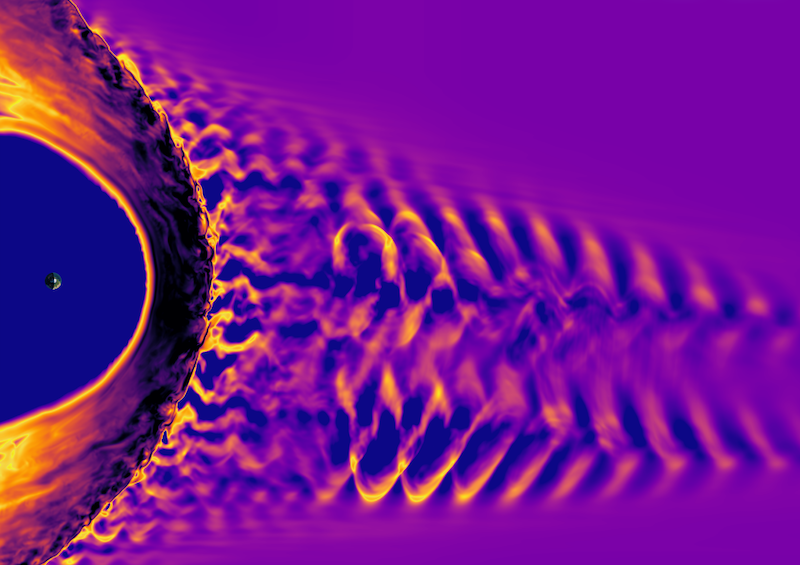Pretty cool!
The researchers had to use molecular level technology to show the reaction, which involved atoms between 0.1 and 03 nanometres.
Source: Researchers capture footage of atoms bonding and separating for the first time
Pretty cool!
The researchers had to use molecular level technology to show the reaction, which involved atoms between 0.1 and 03 nanometres.
Source: Researchers capture footage of atoms bonding and separating for the first time
Feynman always says it best.
I also believe in being unsatisfied with one’s life, and being in constant doubt of every thesis I come across to explain nature around me. It’s what keeps one moving, evolving, without stagnation. The Universe is what it is. We are but observers of this cosmic dance, and such a beautiful show must be watched without prejudice, and with a child’s awe and curiosity.

This is very cool!
Nice.
“I believe in Spinoza’s God, who reveals himself in the lawful harmony of the world,” he told him, “not in a God who concerns himself with the fate and the doings of mankind.”
Source: How Einstein Reconciled Religion to Science
On a similar note, I also like this thought that resonates with my own.
https://twitter.com/ProfFeynman/status/1072868443110559746?s=09
Found a very neat video, nice and simple that explains about the basic science of a nuclear power plant, requirements of building one and advantages over traditional energy sources. Definitely recommended for those scared of the neutron and perhaps an eye-opener to the potential for cleaner energy of the future !
When I was growing up and had to decide what field to get in to for my college, I was in a dilemma. I really liked computers, after the really simple BASIC and C programs I wrote during my high school. But on the other hand, Physics seemed too fundamental and I wanted to understand what is going on around me and explain it with the Math I so love. But what did catch my interest most of all is the explosive reactions that Chemistry opened up. It was something I did not understand at all and that intrigued me. Of course little did I know that Chemical Engineering had nothing to do with pure Chemistry. But enough of that reminiscence.
It always is interesting to me to find experiments that open up new perspectives on things. And recently, this article “Top 10 Mad Science-Worthy Chemistry Experiments” via Neatorama caught my attention. And I just couldn’t let it pass without writing a rant about it…
Do read the article and watch all videos to get some interesting new ideas and the possibilities that Chemistry opens up.
Wow! There aren’t too many things I see everyday that make me go wow ! This could be next big thing that might have a noticeable impact on how you and I work everyday and the possibilities are quite staggering if you think about it. But of course for now, I’ll be happy to have just quickly charging cell phones, laptops, mp3 players and hybrid cars that do not degrade in performance quickly if it is plugged in too long ! Grrr …
Here’s an excerpt from the article that talks a little about the physics involved:
A number of recent papers suggested that, in at least one lithium battery class (based on LiFePO4), the problem wasn’t the speed at which lithium moved—instead, it could only enter and exit crystals of this salt at specific locations. This, in turn, indicated that figuring a way to speed up this process would increase the overall performance of the battery.
To accomplish this, the authors developed a process that created a disorganized lithium phosphate coating on the surfaces of LiFePO4 crystals. By tweaking the ratio of iron to phosphorous in the starting mix and heating the material to 600°C under argon for ten hours, the authors created a material that has a glass-like coating that’s less than 5nm thick, which covers the surface of pellets that are approximately 50nm across. That outer coating has very high lithium mobility, which allows charge to rapidly move into and out of storage in the LiFePO4 of the core of these pellets. In short, because lithium can move quickly through this outer coating, it can rapidly locate and enter the appropriate space on the LiFePO4 crystals.
The results are pretty astonishing. At low discharge rates, a cell prepared from this material discharges completely to its theoretical limit (~166mAh/g). As the authors put it, “Capacity retention of the material is superior.” Running it through 50 charge/discharge cycles revealed no significant change in the total capacity of the battery.
Here are a few links on the same topic if you are hungry to learn more about it.
Few of the things I care about in this endless pursuit of knowledge, as an individual on this earth … Concisely and very precisely thought out and written in simplicity:
Michael Brooks on five mysteries of the universe.
Update: In a tangential topic, here are couple of things few others are worried, about the solar system: The Unknown Solar System.